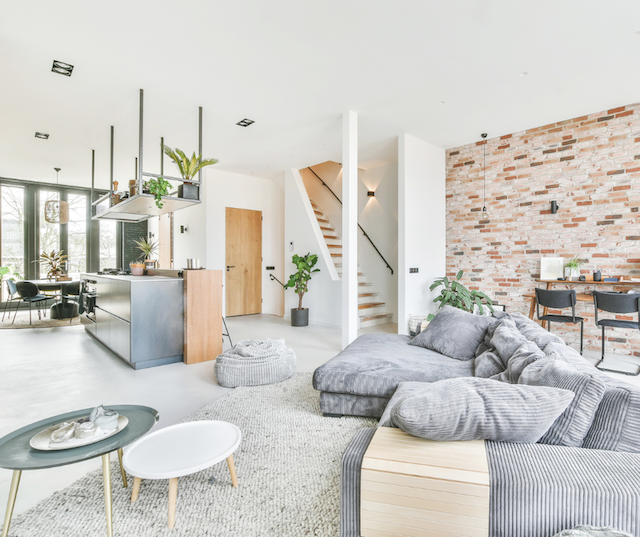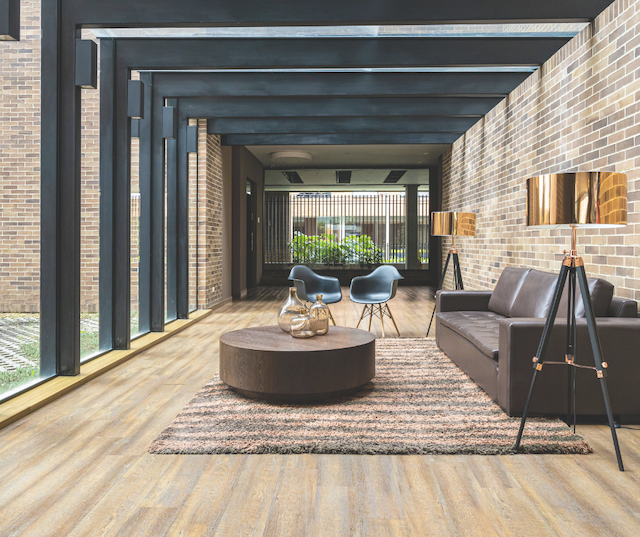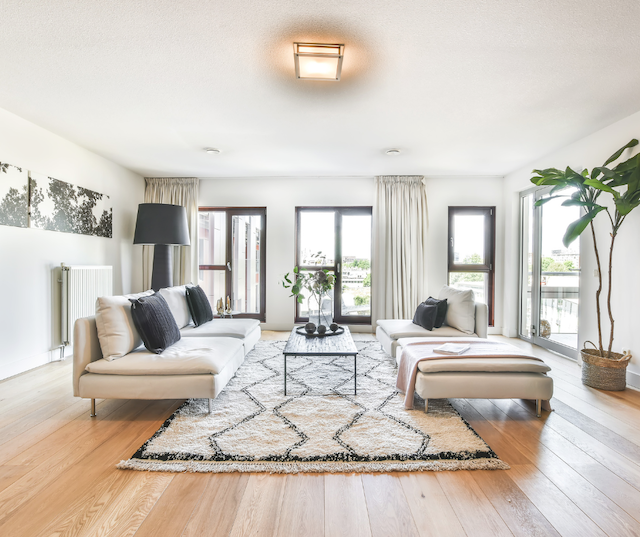
When looking to refresh a space, there are certain guidelines that will help a space feel good. As you consider the changes you want to make, be sure to create Spaces That Flow from one room in your home to another. Here are some suggestions that will help make your home a place that feels good and carries an intentional design rather than looks haphazardly thrown together.

Keep Flooring Consistent
Oftentimes when we begin a remodeling, or room refresh project, the flooring is at the top of the list of things to update. When you select your flooring keep in mind the transitions from one room to the next. If you have consistent flooring throughout the main areas and secondary areas in your home, your home will appear more seamless and feel larger. Chopping up a home with multiple types of flooring is not only confusing, but also doesn’t look very good. Once that beautiful new flooring is installed, be sure to keep traffic pathways clear and clutter free. Draw attention to what you want to show off!

Use Neutral Colors
Decorating with a consistent theme or color scheme will go a long way towards creating Spaces That Flow. Neutral colors help rooms appear more spacious, feel more calming, and allow you to change accessories out seasonally without redesigning an entire space. By using neutral colors, you create design longevity and versatility. When going from room to room in your home, notice which spaces feel too chaotic and busy. If you are going for a more consistent theme, could you change up the wall colors, or switch out some furnishings to achieve a more neutral look? Paint is the most inexpensive way to change the look and feel of a room. Neutral colors really make Spaces that Flow.
An in-home Color Consultation is a great way to select a paint color you won’t regret.

Maintain A Unified Style
If you start your project with an idea or design board, this will help you see how to incorporate cohesive elements in a space before you make your purchases. Not only does building a space around a color palette build Spaces That Flow from room to room, but this will allow you to carry the same style from room to room as well. Not sure what your style is? Consider creating a folder on your computer to save images of spaces you love. This is the best way to narrow down your style. When you see the same type of image saved over and over, know this is what makes your heart happy! Use these images as a jumping off point to create a unified style in your home.

Furniture Placement
Implementing thoughtful furniture placement is key when planning a space refresh. Traffic flow should be considered as well as how the space is utilized. How much seating do you need? Adding too much, or too little, seating will define the space as crowded or sparse. Keeping a clear lane of travel between door openings and other furniture pieces will ensure ease of movement in each area. Keep in mind reclining chair, or dining chairs that scoot in and out will need extra room. Before you purchase, measure and remeasure, mark the furniture footprint in the space with painters’ tape, and think about height and depth. Doing all the legwork before purchasing will save you buyer’s remorse in the end.

Area Rugs
The best way to define a space is by using an area rug. Not only are area rugs great for anchoring a seating area or dining set, they are also a way to incorporate a cohesive design style into a space. When you have an open concept great room, your area rugs become an essential element in making Spaces That Flow. Area rugs should complement each other, not compete. You can do matching rugs or one plain and one patterned in the same color scheme. Think about textures and colors when adding this important layer to your space. An area rug can add a cozy and comfortable feel, or elevate the space to feel more formal.

Declutter
One of the biggest deterrents to having Spaces That Flow in your home is the clutter. We tend to live all over the place, especially if you have kids and pets. Clutter at one level or another is a normal part of living. Little adjustments to everyday life can help minimize the clutter. Spend 10 minutes at the end of the day before bed to put the dishes in the dishwasher, return the remotes to their tray, fold the throw blankets, and organize the family shoes by the door. It’s an all-hands-on deck job, so enlist your house mates, old and young. If everything has a defined place, there is no question about where an item should be returned to. Encourage by example and little by little the clutter will become less and less.
Having a home with Spaces That Flow isn’t an impossible dream. Start with two rooms. Create a plan and begin by discarding what doesn’t serve your aesthetic anymore. Sometimes a blank canvas is the best way to start. With some planning and a few inspiration pictures, your dream spaces are within reach! Want some help? A Design Consultation offers loads of ideas and great suggestions on how to use what you have to refresh your space. Discovery Call is always free!
Enjoy!


